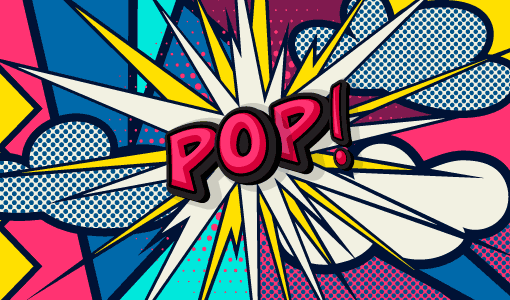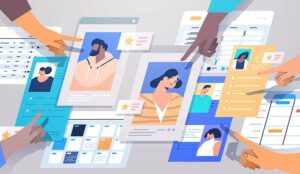We present six great ideas for creating a great personalized customer experience, before sharing lots more insight into the topic as a whole.
1. Eliminate Callers Having to Repeat Themselves
Generally, contact centres are still designed to handle customer contacts in an industrialized, mass-production model. This really holds us back when it comes to personalization.
It also raises an interesting question: do you really know your customers?
For many customers, it remains a joke that when they pass through the identification and verification (ID&V) process, have their call answered and then are transferred to a second advisor, they are asked the same questions at each touchpoint.
Let’s first run through our most common customer journeys and look to eliminate occasions where customers have to repeat themselves.
So, let’s first run through our most common customer journeys and look to eliminate occasions where customers have to repeat themselves. This should include switching between channels.
After this, we can move onto more sophisticated ideas…
2. Match Channels to Tasks
If you do your customer journey planning and consider all of your different channels, you can identify the strengths of each of those channels.
Let’s take the voice channel as an example. It is great for handling:
- Complex problems that go beyond: “Where is the FAQ?”
- Emotional complaints by conveying empathy in the human voice
- Queries regarding retention, as humans can be more persuasive
So, look at your inbound queues and analyse which queries are complex, emotional or significant to retention. This tells you where voice ought to exist. The remainder of queries could be pushed through self-service or other digital channels.
By implementing a strategy to match customers to the right channel, you can provide an authentic human response when it matters most. This means that you can use your people to personalize customer experience at the best possible times.
3. Implement “Know Me” Routing
Based on information within your CRM, you can tag contacts based on a customer’s value, history or maybe even where they are in their customer journey.
With these tags, when a caller contacts you, you can automatically route them through to an advisor who is specially trained to handle contacts from customers of this “type”.
Another option, which will push personalization even further, is to use tags to pass customers through to the advisor that they last talked to. This gives customers the impression that they have a “personal helper” within your organization.
While many routing technologies route callers based on one attribute, more modern “know me” routing will allow you to apply lots of different tags to the same customer.
Yet while many routing technologies route callers based on one attribute, more modern “know me” routing will allow you to apply lots of different tags to the same customer. This means that all contacts are automatically tagged with everything you know about the person and their context.
You can also do things like weight which attributes are more important at certain times and then route customers in your preferred direction.
By implementing a routing system like this, you can move away from outdated IVR processes and offer more personalized experiences to customers.
Find out more on this topic in our article: A Guide to Call Routing in the Contact Centre
4. Pair Up Your Products
If you have website cookies, one of the simplest things that you can do to personalize customer experience is to suggest things to customers based on their search history.
Also, when customers look for certain products, you can pair that product up with others using data from other customers.
For example, if you know that a number of customers have bought product Y after purchasing product X, you can suggest product Y to the customer when they have added product X to their basket.
By making this suggestion, you are tailoring your offering to an individual customer based on the interests of other similar customers.

Simon Johnson
In addition to this, Simon Johnson, a general manager at Freshworks, says: “Through personalization, companies can put particular images or backgrounds onto their website, based on who they are dealing with.”
“By doing this, organizations can help guide customers down a particular path based on their digital profiles and demographic.”
5. Digital Profiling
While we have discussed personalization very much in a digital context, it is important to remember that the world has not yet gone fully digital. Not everyone is at the same stage and you can personalize based on this idea.
As Martin Hill-Wilson, founder of Brainfood Extra, says: “Do you know how fast your customers are adopting to new digital behaviours? If so, are your journeys calibrated to meet that expectation?”
The expected answer to both of these questions is “no” and “huh?”. However, this type of research is important for developing foundational insights about customers.
To conduct this research, some things that you want to consider are:
- Customer device preferences – i.e. do they do their shopping via a smartphone, laptop or maybe still through brick and mortar stores?
- Channel preferences for key tasks – i.e. which channels do customers use for key tasks like purchasing, getting updates and making complaints?
- Customer expectations – i.e. do they expect to be fully autonomous or would they like us to hold their hand through the whole journey?
All of your research into the above will allow you to segment customers into digital profiles, helping you to build a picture of how a certain customer would react to various service strategies.
You can then alter customer journeys based on these profiles, so they better match up to the personal preferences of various customer types.
As Phillip, one of our readers, says: “Once you know your customers, create personalized messages, products and service. Identify what they need not just what they want.”
Just remember our first point though, we’re all on a digital journey, so don’t expect these profiles to remain segments. Digital profiling is an activity that needs revaluation over time.
6. Get Proactive With Your Pop-Ups
Proactive pop-ups are a great tool for you to personalize customer experience in the moments that matter, as they allow you offer support at a time when customers really need it.
“The technology is there to recognize when a customer on the website seems frustrated, as by tracking when customers do things like frantically move their mouse around, we can proactively pop up a message and offer to help them,” says Simon.
To make this more personal, you can add a pop-up message that is linked to the web page that the customer is stuck on.

You can add a pop-up message that is linked to the web page that the customer is stuck on.
For example, if the customer is stuck on the booking section of your website, you could proactively send them a message with a how-to-make-a-booking video, to make their experience easier.
By using this strategy, you can personalize customer experience based on both the customer’s position in the journey and their emotional state.
It is a good example of how you can mix personalization with proactivity to help create a unique customer experience.
Just remember, as Hannah, one of our readers, once told us: “The WOW factor can be achieved when the message is relevant, personalized and arrives at the right time.”
For more on improving your proactive strategy, read our article: What Is Proactive Customer Service? With a Definition, Examples and Key Challenges
3 Personalization Mistakes to Avoid
Moving from a mass-production industrialized model of handling contacts to a personalized approach isn’t easy and there are pitfalls that may stunt your progress.
However, to help you avoid those potential problems, Simon Johnson lists three of the most common personalization mistakes below.
1. Ignoring Knowledge Management – Knowledge management underpins almost every personalization strategy, in terms of:
- Do you have the right information?
- Is it up-to-date?
- Are you showing it at the right time?
The whole organization needs to take responsibility for that. One team within the contact centre may be enough to update a knowledge base but not to implement a knowledge-sharing strategy that complements personalization.
2. Failing to Set Long=Term Goals – Personalization needs to be an organization-wide investment. You must make sure that your strategy isn’t just going to be a two- or three-month initiative.
Why? Because the goal of personalization is to deliver a better experience to customers – so the efforts need to be invested in as an organization, enabling you to constantly provide customers with a consistent, personalized experience.
3. Not Appointing Directly Responsible Individuals – Who is analysing customer behaviour, content delivery and measurement of the experience? All of these things need owners.
Having these owners in place enables you to report back to the business. Without that, the project will just “float along”, and you often see these projects fail because they are not given the right investment, as there is nobody taking clear responsibility.
Moving to Real-Time Personalization
Google are well ahead of most in terms of personalization. It knows what we are doing before we are doing it.
It is no coincidence that Google, over the past few years, have made a big thing about how you, as a visitor, can control your own privacy.
It is no coincidence that Google, over the past few years, have made a big thing about how you, as a visitor, can control your own privacy. By doing this, they are proactively offering you the ability to reset what they know about you.
If your organization can know a customer in a digital context like this, you can do all sorts of real-time personalization, such as:
- Suggest offerings based on customer information
- Tweak navigation based on the customer preferences
- Change images on the company website based on who you’re dealing with
There are lots of website cookies and personalization tools that will help you do this, but there’s a lot of digital profiling work to be done before you get to this stage.
The Benefits of Personalization
The big question is, does offering a personalized customer experience on your digital platforms work in terms of the emotional impact that it has?
Well, according to research from Gartner, the answer to that is yes, as companies that have incorporated web content personalization technologies are already seeing:
- Items per order increased by 50%
- Average order values increased up to 53%
- Customer conversion rates increased by up to 33%

Martin Hill-Wilson
Commenting on these results, Martin Hill-Wilson says: “In a world where I have so much information coming in at me, and I’m therefore filtering out most of it, if I have somebody who can be relevant first time, I’m going to tune into those people much faster.”
However, achieving this goal of being relevant first time is much easier said than done. So, let’s take a quick look at how two of the world’s leading brands are doing it.
How Are Amazon and Google Using Personalization?
Here are two great examples of what two of the world’s biggest companies are doing in terms of personalization and anticipating customer needs, even before customers do.
Amazon
If you dig into the US patent library and you go looking for Amazon, you will notice that as far back as 2012 they recognized the power of knowing an individual’s buying habits. So they patented something called “Anticipatory Package Shipping”.
This algorithm allows Amazon to predict demand, based on all the things they know about their customers. These include:
- Previous orders
- Product searches
- Wish lists and shopping cart contents
- Returns
- How long users hover their cursor over an item
By combining all of these factors, the algorithm can predict that there is a great likelihood that customer X is going to buy product Y in the near future.
On that basis, Amazon can forward-ship product Y to a hub local to customer X in the anticipation that this product is what the customer is next going to be buying.
In reality, we are all creatures of habit, and that can be analysed in terms of patents.
“While such algorithms may offend our own sense of uniqueness, in reality we are all creatures of habit, and that can be analysed in terms of patents,” adds Martin.
Also, we are moving into a world where the Internet of Things (IoT) is becoming a reality, and our devices will be able to tell the internet that they will soon need re-servicing or replacing and tell our supplier. This will, in time, enable suppliers to provide a very personal and useful service.
In 2016, Google released “Google Assistant” as an evolution of their “Google Now” feature. It is a virtual assistant that is part of certain mobile and smart home devices.
The Google Assistant acts as a digital shadow for users that allows Google to track what they’re doing – in terms of their Gmail, internet searches, Google calendar and other Google activity.
By acting in this way, the Google Assistant can answer your simple questions like: “What do I have to do today?” It does so with the aim of giving you your own personal Google.
This enables Google to personalize the user experience, with more details in how they are doing so included in the video below.
The Google Assistant can also push out reminders to users, to keep their day on track, with helpful prompts.
“As this moves forward, many people think that rather than trying to report on everything, these virtual assistants are going to move to an exception-based model – once they know your habits,” adds Martin.
While this is all very impressive, most brands won’t be able to offer an assistant like this. But they need to be aware of and catch up to this world.
The marketing arena is much more advanced in this space than customer service, and soon customers will ask: if you can personalize my experience here, why can’t you do it there?
Personalization Where It Matters Most
There are lots of scenarios where personalization can add value – not just to your organization, but to your customers too.
To find out what should be driving your personalized customer experience strategy, you should be assessing:
- Customer needs
- Customer expectations
- Customer personality types
- The situation
- Customer history
Much of this assessment will involve studying your customer journeys, because customer journeys are a way of describing what the customer is trying to do, through a series of tasks.
From a contact centre perspective, one of the most educational things that you can do is to understand where the contact centre sits within those journeys.
One of the most educational things that you can do is to understand where the contact centre sits within those journeys.
This is because, oftentimes, the customer journey does not begin with us sitting in the queue, it may begin with an internet search and then us discovering that we need to talk to you, for example.
Another example is if the customer has dealt with another part of your organization and they are already coming to you upset and disturbed.
So, customer journeys are a way for you to plot that and understand how it all fits together. With this understanding, you will know better where you can personalize customer experience to drive the most value.
Final Thoughts
With personalization we can use what we already know about individual customers to intelligently customize their customer experience.
Then, we can add in the human layer by personalizing customer conversations.
If we can marry those two things together, that can be a very powerful strategy for providing personalized customer experiences.
For more on creating personalized customer experiences in the contact centre, read our articles:
- 26 Tips to Personalize Customer Experience
- 21 Great Ways to Personalize Your Customer Interactions
- Using Personality Profiles to Personalize Customer Interactions
Author: Robyn Coppell
Published On: 17th Jun 2020 - Last modified: 18th Mar 2024
Read more about - Hints and Tips, Customer Management, CX, Freshworks, Martin Hill-Wilson, Personalization




















